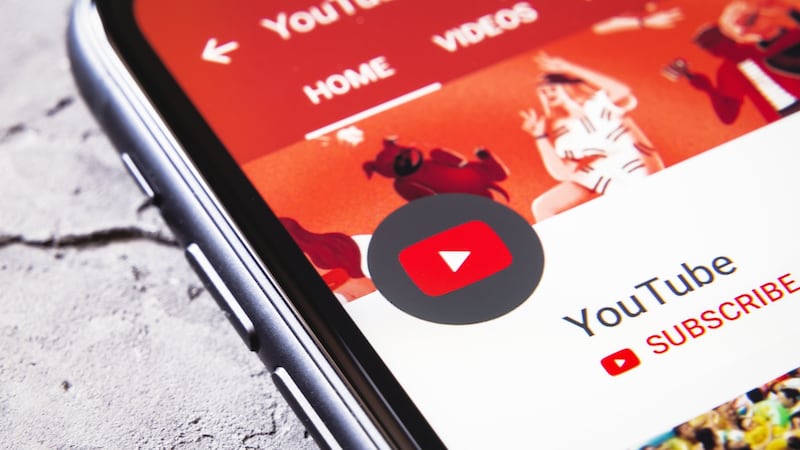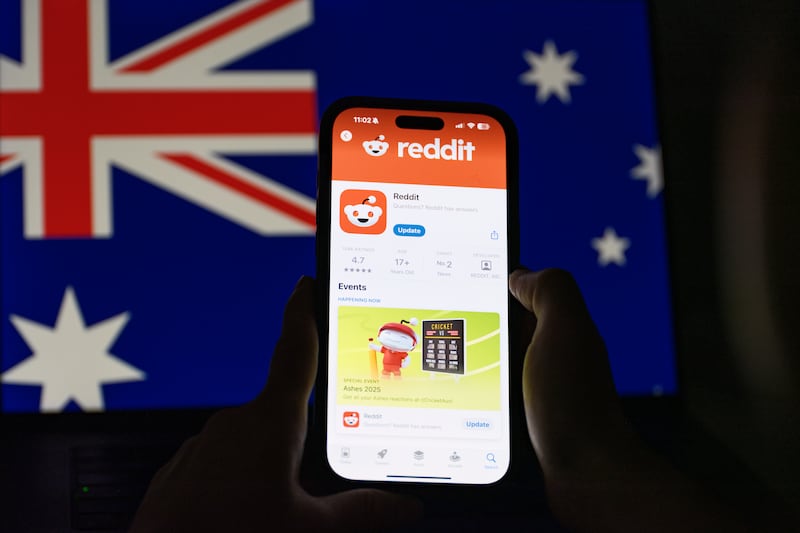We live in an era when household rules on screen time have been relaxed somewhat and older people have become unavoidably familiar with the flashing sights and shrill sounds of celebrity YouTubers. YouTube is the broadest of churches. About 15 per cent of all traffic on the internet right now is people watching YouTube (according to analysis cited by the New York Times's Rabbit Hole podcast).
I frequent a sort of old geezer hobbyist version of YouTube, in which middle-aged people explain musical tropes, critique comic books or fix vintage toys. So my algorithmically curated YouTube recommendation are filled with similar videos and I never see the really popular YouTubers. (One of the consequence of handing our tastes to the algorithms is that nobody shares the same universe anymore.)
I was interested in exploring the ways YouTubers beloved by youngsters might be affecting the aesthetics of the future, so I asked for recommendations on Twitter. I got a baffling array of suggestions including LankyBox, Vy Qwaint, Wolfy Playz, LazarBeam, KSI, LaurenZside, Ethan Gamer, Dan TDM, Ryan Unboxes, Norris Nuts, Slogo, Adley, Danny Duncan, David Dobrik, AzzyLand, Jackscepticeye. It reads like a sentence from an Anthony Burgess novel.
Whole YouTube-originated genres include Let’s Play videos, in which a loud person talks/shouts their subscribers through a video game; “reaction videos”, in which a YouTuber “reacts” hyperbolically to interesting food or new memes or to another YouTube video or a television show or a song or anything you could conceivably react to; lifestreaming videos, in which a YouTuber gives the viewer snippets of their increasingly more wealth strewn lives; pranking videos, in which floppy-haired youngsters perform obnoxious pranks, sometimes involving the destruction of expensive stuff; challenge videos, in which YouTubers lay down the gauntlet to each other to do silly things; beauty vlogs; crafting videos; videos in which young people do wispy acoustic covers of massive pop songs; South Korea-originated mukbang videos in which people eat disturbing amounts of food; videos in which YouTubers gift their friends cars or take them off in private jets; and videos in which big YouTube stars challenge other big YouTube stars to fight in pay-per-view boxing matches.
There are also the potentially radicalising elements of far-right YouTube, but we’re not here to frighten you today. (That said, you should listen to the New York Times' excellent Rabbit Hole podcast.)

In the early days, YouTube was dominated by slightly chaotic amateur videos that went viral from time to time through the force of pure charm.
The first video ever uploaded to the site, in 2005, was a minute and 18 seconds-long amateur video by YouTube co-creator Jawed Karim called Me at the Zoo, in which he is at the zoo and says: “So here I am at the elephants. The cool thing about these guys is that they have really, really, really long, um, trunks. And that’s cool. And that’s pretty much all there is to say.” There’s something understatedly profound about this non sequitur of a video, which makes me feel warmly towards Karim and his great wealth.
This early era of YouTube is one that Stanford lecturer Carol Vernallis has written about in her book Unruly Media: YouTube, Music Video, and the New Digital Cinema (Oxford University Press) and she laments its passing. "When a medium breaks," she tells me, "there's a lot of freedom and excitement and the boundaries are open and everyone is watching clips like 'Charlie bit my finger'. Then the corporations take over."
Since those days, YouTuber tropes and styles have formalised into an aesthetic value system. Thanks to the suggestions above I was soon drowning in a wash of quick cuts, meme references, self-reflective abstraction, conspicuous consumption, impenetrable in-jokes, formalised camaraderie, video games I didn’t understand and a lot of great hair (YouTubers generally have good hair).
It was entertaining but overwhelming. So I called upon two experts to help me navigate it: Rachel Berryman, a writer and academic based in New Zealand, and Chris Stokel-Walker, Newcastle-based author of YouTubers: How YouTube Shook Up TV and Created a New Generation of Stars. Here are some of the YouTube tropes and quirks I'm getting my head around.
Jump cuts:
The most common stylistic quirk on YouTube is a single camera shot that cuts jerkily from one sentence to the next. It’s one of YouTube’s signature styles and a legacy of how the platform developed as a place for short low-budget videos. Unlike television, where pieces-to-camera are scripted, YouTubers tend to ramble and then render everything snappy and coherent in the edit.
“The earliest YouTube videos were uploaded with . . . one of those low-res cameras, pretty amateurly edited with something like Windows Movie Maker,” says Berryman. “[That] gave birth to that jump-cut structure, which was originally about condensing time to take out all the gaps and hesitations.” There are no longer time limitations, she adds (in fact, videos are getting even longer to maximise advertising), “but I think the jump cut has remained true as something really emblematic of the editing style of YouTube”.
Meta-references:
Popular YouTube videos are filled with flashes of memes, zoom-ins, funny voices, gurning faces and whiplash-inducing cultural references. Watching a Pewdiepie video is like having some sort of episode. I thought that my generation of Generation X-ers were knowingly abstract, but this generation is dealing with so many layers of whimsy and reference it’s often disorienting. Berryman points out that an increasing trend is for YouTubers to “interrupt themselves while the video is going [inserting a scene from when] they are editing, to comment on the scene they’re seeing”.
YouTube is a competitive attention economy so YouTubers are forever performing stunts that involve conspicuous consumption or destroying stuff
The incestuous, self-referential nature of popular YouTube content is nurtured by the platform itself, she says. “Part of YouTube’s own educational guidelines for creators is around ‘following your audience’. Because if you’re producing what the audience is talking about or interested in already, it’s more likely they’ll come to that video and also that YouTube will recommend it in their feeds.”
This is why popular YouTubers comment on all the same things and engage in all the same fads and crazes. It’s why many of the popular formats – let’s plays, unboxing videos, reaction videos (I’ve watched YouTuber Azzy react with such exaggerated surprise to everything from videos of babies crying to inventions for pets, I worry for her) – exploit pre-existing phenomena. A duo of YouTube creators called the Fine Brothers unsuccessfully tried copyrighting the “reaction video” concept, knowing how lucrative it might be.
For people who exist in this media world, the references create a warm blanket of familiarity. For newcomers (me) it’s incomprehensible and alienating. There’s also a soap-opera element.
“Drama and gossip are a big commodity on YouTube,” says Stokel-Walker. “There are whole channels on YouTube devoted to tracking what certain YouTubers have said and you’re expected to keep up with that, showing that you are an engaged YouTube viewer . . . If a gaming YouTuber does something stupid on a video, others will react to that. If you follow the trends, it’s an easy way to create content.”
Parasociability
The stylistic norm on YouTube, says Berryman, is “the direct address, speaking to the camera, maintaining eye contact with the camera. All those things . . . collapse the sense of distance with the viewer . . . Unlike books or films, that sense of interactivity is very important.”
Both Stokel-Walker and Berryman refer to the relationships between fans and their favourite YouTubers as “parasocial”, which means a kind of psychological relationship in which the consumer views the producer as “a friend”.
This explains young people’s tolerance for something I felt a lot on YouTube: tedium. Yes, despite the funny voices, jump cuts, meme references and general hyperactivity of the style, I found much of the content (particularly of the ’let’s plays’) unrelentingly boring. This makes no sense to me until Stokel-Walker explains that in many ways fans see enjoying YouTube videos as more like hanging with pals than consuming film or TV.
“It has more in common with WhatsApp or Zoom calls, the type of conversations we’re all having with family now, where you’re both on either side of the camera lens and there’s some sort of engagement.”
Berryman says that idea is amplified by the comment section below and the fact many YouTubers come with a gang of fellow vloggers who appear across each other’s videos. David Dobrik, for example, has his “Vlog Squad”. “You can see nine versions of the same event across these channels and it invites you to feel like you were part of that event too; You’re part of that friend group.”
Over-the-top stunts:
YouTube is a competitive attention economy, so YouTubers are forever performing stunts that involve conspicuous consumption or destroying stuff. As I write this, I've paused to watch good-natured prankster Dobrik give a Lamborghini to an emotional friend (conspicuous self-helpy capitalist propaganda is a big value underpinning a lot of this and similar videos).
Then I watched clean-living Danny Duncan removing his “virginity rocks” T-shirt to crash a beat-up van into a swimming pool. “The increased competition means you need to do increasingly outlandish,” says Stokel-Walker.
Many combine lavish spending with destruction. "Jake Paul has a multimillion-dollar mansion in California and the grounds are littered with expensive cars he runs around and sometimes thrashes," says Stokel-Walker. The danger for someone like Paul, he adds, is that the riches and crazy stunts make him less relatable so "he constantly talks about fact he's a high school dropout and an English teacher who said he'd never make it".
Over-the-top stunts going wrong:
In the quest to differentiate themselves and go viral many YouTubers have skirted beyond the boundaries of acceptability. Goonish controversialist Pewdiepie was censured for paying two Indian men on the freelance website Fiverr to hold up a sign saying, “Death to all Jews.” This is cruel and offensive on many levels.
Jake Paul’s brother Logan Paul went to a Japanese forest infamous as a place people go to kill themselves, filmed a corpse and put it on his channel. “He knows that YouTube is an attention economy and you need to stand out to do that,” says Stokel-Walker with a sigh.
This leads to another trope . . .
The crying video:
Berryman has co-written an academic essay called Crying on YouTube. Crying videos emerge sporadically to reinforce a particular YouTuber’s authenticity despite the increasingly relentless wealth, professionalism and upbeat positivity that might otherwise surround their output. You can see a lot of these if you search – including examples from Logan Paul. These videos typically see the YouTuber appearing looking less glamorous and less well lit and they often preface the video with an acknowledgement that they’re not going to get many “likes” (these videos nearly always get likes).
These videos function, says Berryman, as “really authentic moments that build a sense of intimacy and make you feel like you’re known and trusted by them in the position of the confidant”.
But YouTube fans can be a difficult crowd. “Often you’ll see that people will attempt to do crying videos if they’re on one side of a YouTube drama [or] as a form of apology, and if the performance of that emotion isn’t deemed to be actually correct then that can lead to ridicule and banishment from the YouTube community because you aren’t seen to be authentic.”
The great TikTok migration:
There's an ongoing quest for authenticity in the world of social media. So just as your grasping this form, people are leaving slick professionalised YouTube and moving onto the wild, free open spaces of a micro-vlogging social media site linked to the Chinese Communist Party – TikTok. Both Stokel-Walker and Berryman assure me that most contemporary social media personalities keep their feet in all platforms wary of how fickle and unreliable the algorithms can be.
YouTube made $15 billion in ad revenue in 2019. It’ll be grand.


















